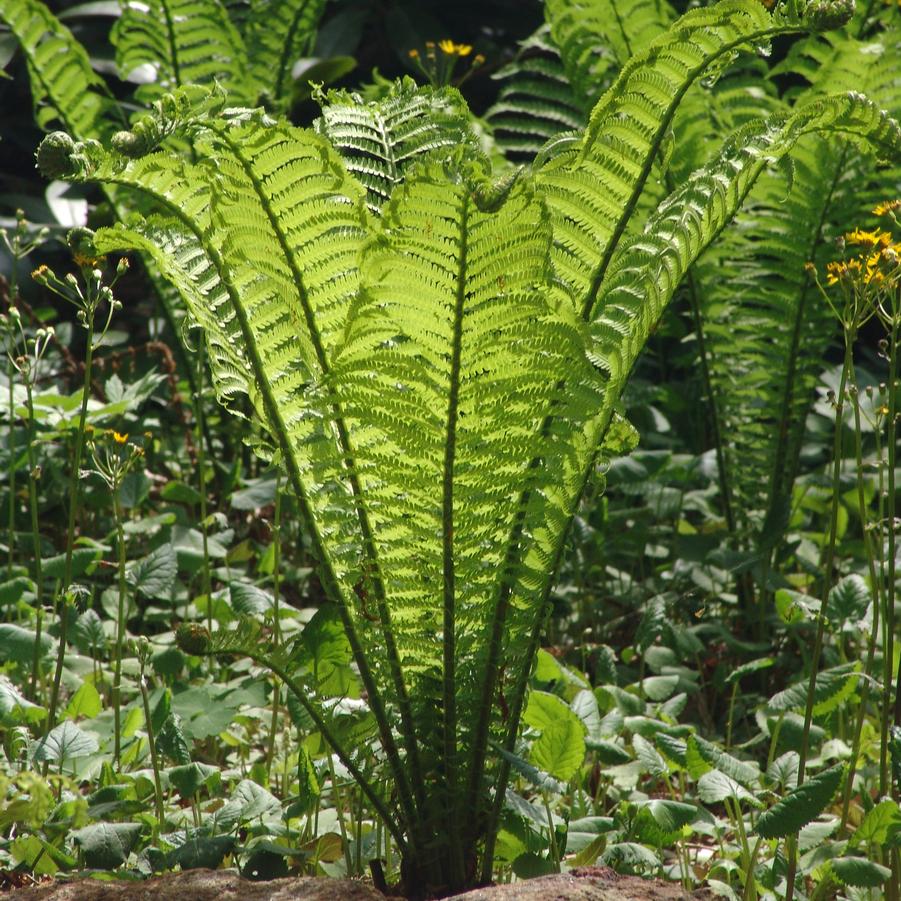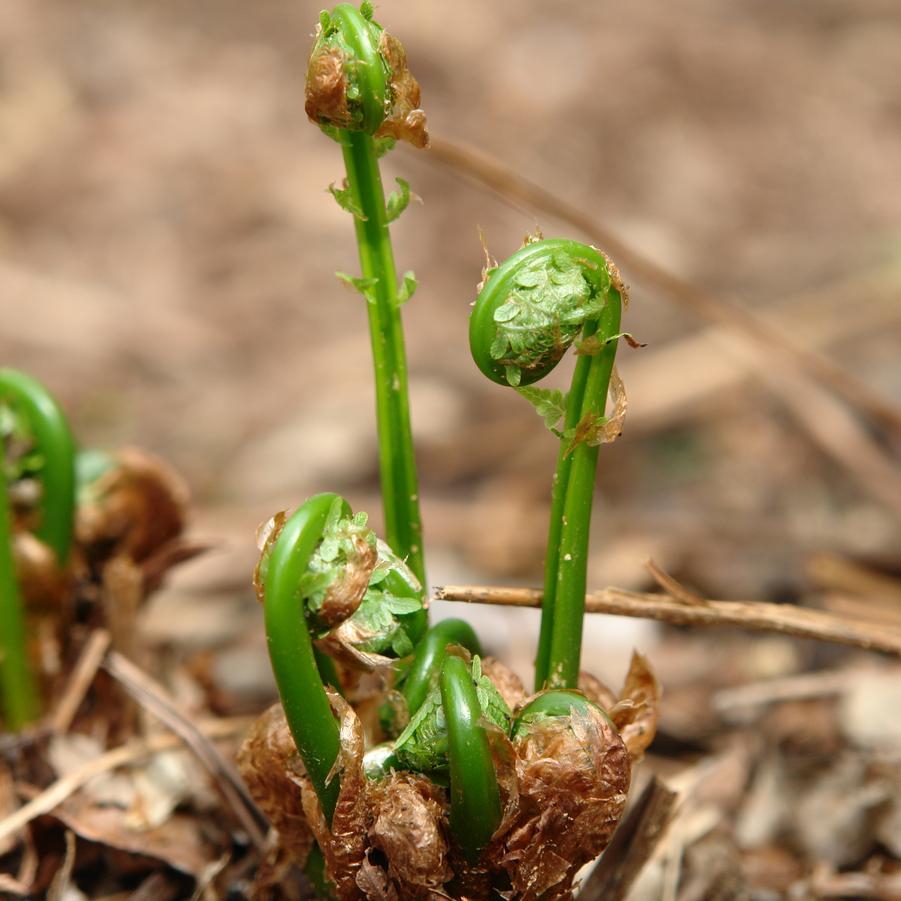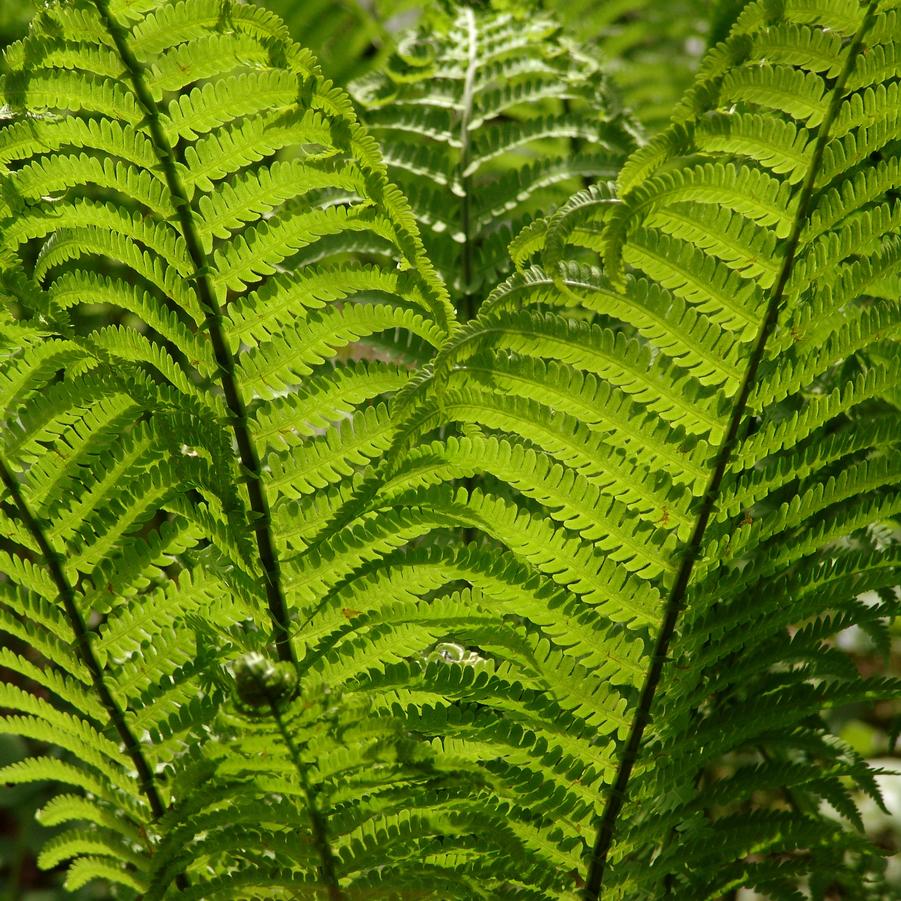





Plant Calculator
Enter the approximate length and width of the area you will be planting and click 'Calculate' to determine how many Matteuccia struthiopteris you will need.
Correct and successful spacing is complex and depends on project conditions. We encourage you to call us at 877-ECO-PLUG for project specific recommendations and further assistance.
Matteuccia struthiopteris
ostrich fern
Large, lustrous, dark green fronds arch gracefully and give the tropical feel of a palm. Happiest in a cool moist site, it will tolerate more sun at the side of a stream or pond. Emerging fiddleheads are delectable sautéed in a bit of oil.
Click here to download technical information for growers:
Wetland Indicator Status
| • | Falcutative Wetland (FACW) |
Plug Type
| • | Landscape Plug™ |
For Animals
| • | Deer Resistant |
Propagation Type
| • | Tissue culture |
Additional Information about Matteuccia struthiopteris
Large, lustrous, dark green fronds arch gracefully for Matteuccia struthiopteris and give the tropical feel of a palm in your woodland garden. Ostrich fern is happiest in a cool moist site, but it will tolerate more sun at the side of a stream or pond. Overall habit is vase-shaped with fronds reaching 3’-6’ in height and growing in dense colonies up to 8’ wide. This deciduous fern spreads by rhizome, emerging fiddleheads in early spring giving way to ostrich plume-like foliage through summer and dying back by fall. Fertile fronds age to a copper-brown that stand erect through the winter. A classic addition to the shade garden, especially planted amongst early spring ephemerals like spring phlox, dutchman’s breeches, trillium, or trout lily. Emerging fiddleheads are delectable sautéed in a bit of oil.
Circumboreal in its distribution, M. struthiopteris revels in cool, moist summers from Newfoundland to Virginia, and can be found in Europe and northern Asia, as well. Fern prefers light shade to deep shade in medium to wet average garden soils. It tolerates clay soil, deep shade, deer and rabbit pressure, wet areas, and is a helpful erosion control. Plant does not like high heat and humidity in the summer like traditional Southern summers or windy sites which will make the fronds tattered and burnt. Ostrich fern does best in higher elevations in southern climates.
M. struthiopteris is a archetypal shade garden plant and is a great lush, cover for large areas of the garden where it can naturalize and form dense colonies. Traditionally seen as a foundational planting near buildings or houses, this durable fern has earned its place in the landscape by its multiple seasons of interest, key habitat in woodland understories for small animals, and its support of the rare ostrich fern borer moth where caterpillars bore through the roots and fronds of this plant. Ostrich Fern won the Royal Horticultural Society’s Award of Garden Merit for its reliability, performance, and pest and disease resistance.
Growing & Maintenance Tips for Matteuccia struthiopteris
M. struthiopteris is native to moist thickets and wooded river bottoms. Prefers moist, rich, well-drained, neutral to acidic soils in full to partial shade. Intolerant of drought and intense heat and humidity. Spreads freely by rhizomes especially in moist, loose soils. Propagate by division every few years in the spring. Best planted in masses in the naturalized, shaded or woodland garden, mixed with other shady natives.
